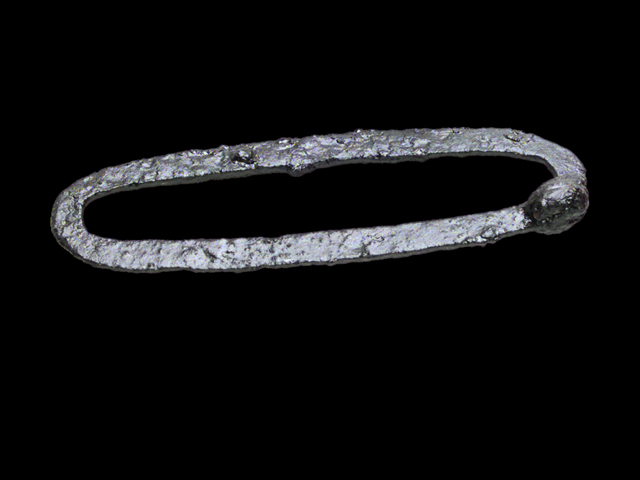 STUDIO PHOTOGRAPHS
STUDIO PHOTOGRAPHSIntroduction | Research | People | Tools
 STUDIO PHOTOGRAPHS
STUDIO PHOTOGRAPHS
FIRE-STEEL (TYA 619: 273)
Type: Fire-steel, whole, iron.
Use: To light a fire together with tinder and flint.
Site: Raisio, Ihala, Mulli abode.
Period: Viking Age
Dating: 980-1220 A.D
Size: 103 mm x 32 mm x 6 mm.
Photographer: Antti Huittinen.
Fire-steels were taken in use in Finland in the Migration period, in ca. 500 A.D. Before that, fire was struck with flint. With a fire-steel, sparks were struck on a piece of flint or of quartz. When thin steel flakes start smouldering in the air, they become sparks. The sparks were struck to a tinder which was made of birch polyporus. When the tinder was smouldering, it was put into a kindling ball. Then the kindling ball was blown into fire. The ball was usually made of juniper bark. From the beginning there were different shapes for fire-steels. The more simple steels were preserved in use until the 19th century when matches replaced this old invention.
The most simple steels were usually oval-shaped. Found in Siiri cemetery I, this lyre-shaped one seems to depict two animal shapes, probably two birds with beak to beak or two snakes. On the other hand, steels shaped like this may have been developed from the bow-shaped ones used in the Merovingian Age (ca. 550-800 A.D.). Similar steels are known elsewhere in Finland, too, and they go back to the Viking and Crusade Age. In the Iron Age, steels were put only in men's graves. In the inhumations of the 11th and 12th century the fire-steel often forms a totality (contents of a tinderbox or "flint purse") together with pieces of flint, tinder and whetstone.
According to the folklore, fire-steels contained magical powers. They were used in spells with which e.g. evil supernatural powers and lightnings were held away.
Other pictures:
Other related topics:
Coordinates: x=100, y=45, z=17.05, r=39/61, 2nd layer.
Introduction | Research | People | Tools